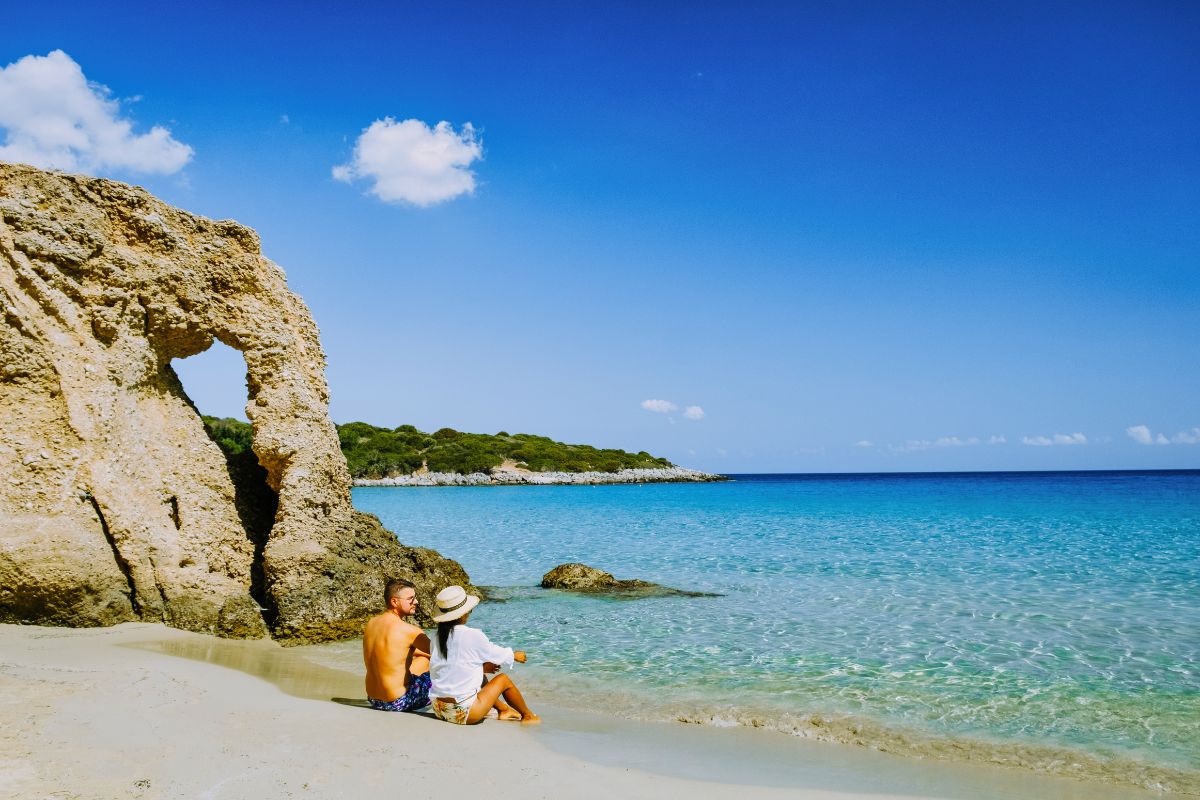Exploring the Beauty of The Island Crete
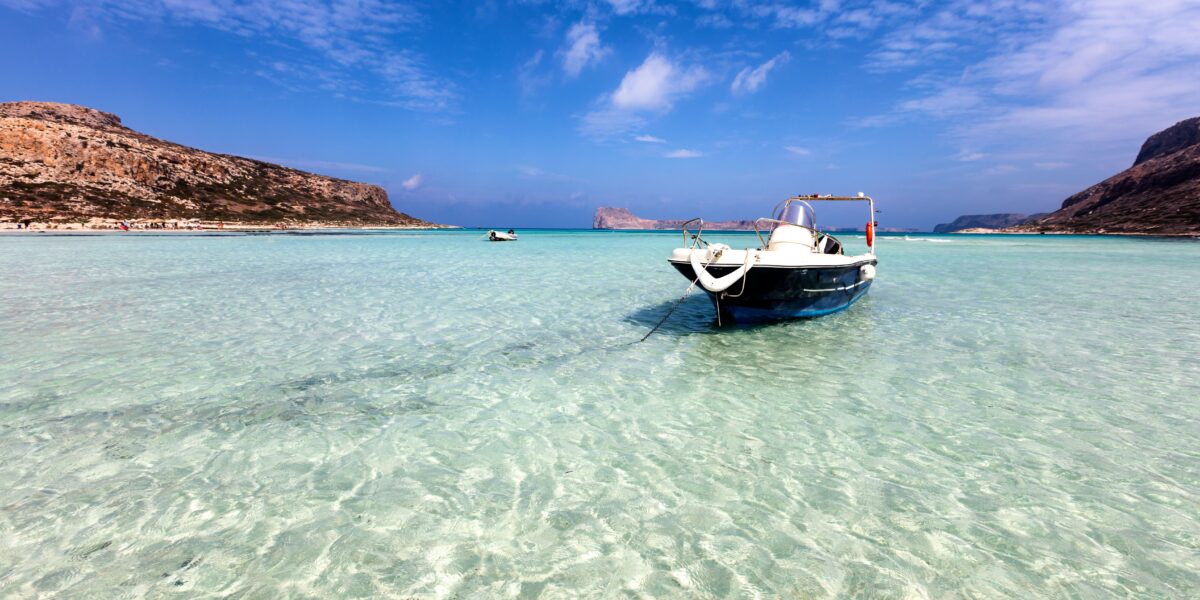
The Island Crete, the largest island in Greece, is a captivating destination nestled in the heart of the Mediterranean Sea.
Its rich history, diverse landscapes, and vibrant culture make it an unforgettable travel experience. From ancient ruins to pristine beaches, Crete offers something for every kind of traveler.
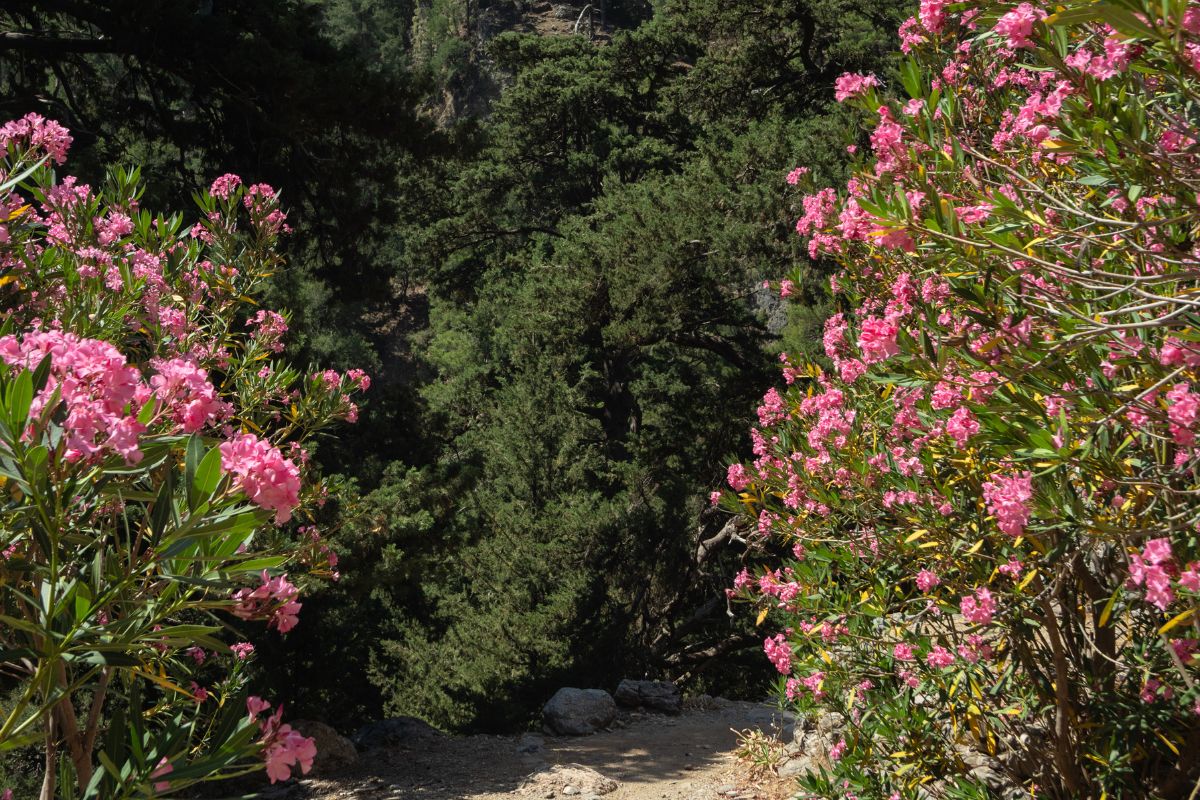
Discovering Crete’s Natural Wonders
Crete is home to a diverse range of natural landscapes, from rugged mountains and verdant gorges to pristine beaches and crystal-clear waters. One of the most remarkable features of Crete’s landscape is its stunning coastline. With over 1,000 kilometers of coastline, Crete offers a beach for every taste.
Majestic Beaches and Seascapes
Crete’s coastline is dotted with some of the most beautiful beaches in the Mediterranean. The island Crete is lapped by the waters of both the Aegean and Libyan Seas, each lending its own unique character to the beaches it graces.
For those in search of secluded tranquility, the pink sands of Elafonisi beach are a must-visit. Situated on the southwestern tip of the island, Elafonisi is renowned for its shallow, turquoise waters and its sense of serenity.
For those who enjoy a livelier beach experience, the bustling resorts of Malia and Hersonissos on the north coast offer a plethora of water sports, beach bars, and restaurants.
The Lush Samaria Gorge
Venturing inland, you’ll discover a different side to Crete’s natural beauty. The Samaria Gorge, a UNESCO Biosphere Reserve, is a hiker’s paradise. This 16km gorge is home to a wealth of flora and fauna, much of which is unique to Crete. The trek through the Samaria Gorge is a challenging yet rewarding experience, leading you through towering cliffs, lush vegetation, and past the abandoned village of Samaria.
Hiking through the Samaria Gorge allows you to fully immerse yourself in the tranquility of Cretan nature. The gentle flow of the Tarraios River accompanies the sound of your footsteps as it winds through the heart of the gorge. Keep an eye out for the Kri-kri, a wild goat native to Crete. These elusive creatures are often seen on the higher slopes. Their presence adds to the natural beauty and charm of the area.
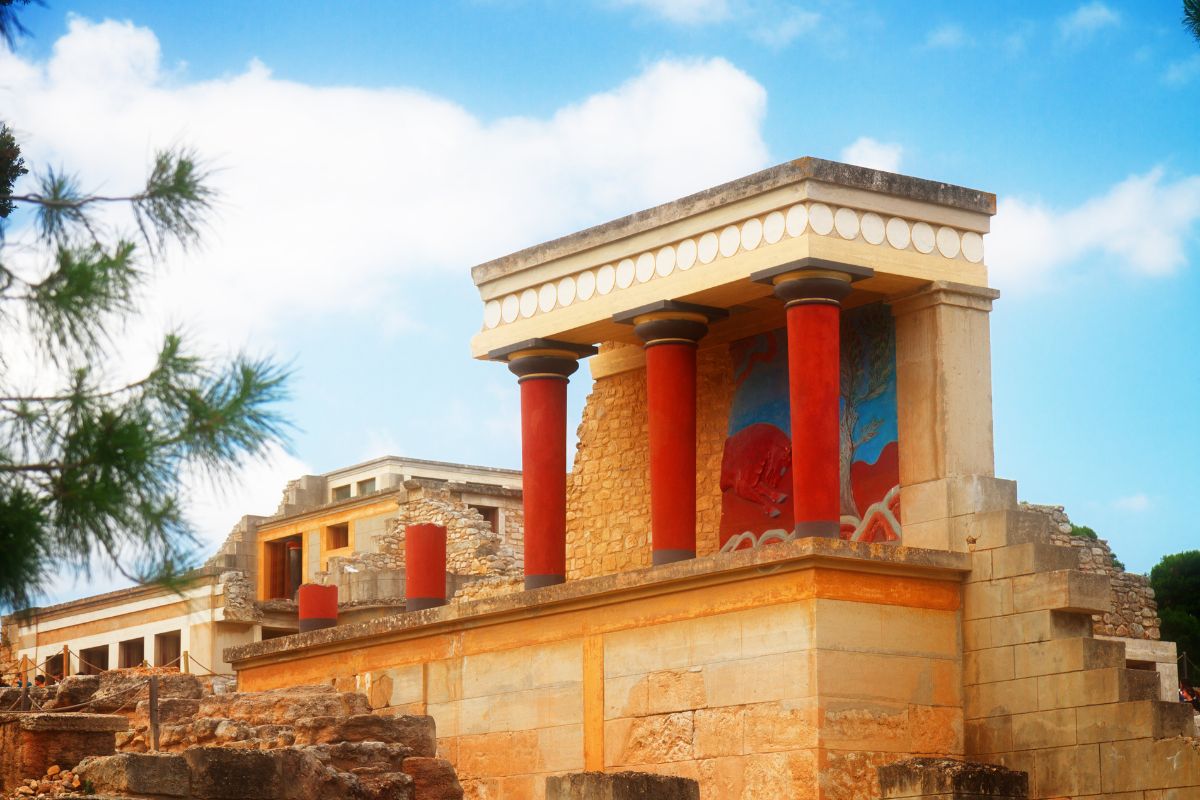
The Rich History of Crete
Crete’s history spans millennia, leaving behind a rich tapestry of civilizations and empires. The island has been ruled by Minoans, Romans, Byzantines, Venetians, and Ottomans, each leaving their mark on Crete’s culture and architecture.
From the legendary Minoan civilization to the Venetian era, Crete’s history is best explored through its well-preserved archaeological sites, fortresses, and historical towns. Each site offers a glimpse into a different chapter of Crete’s captivating past.
The Legendary Minoan Civilization
Stepping back in time to the Bronze Age, we encounter the fascinating Minoan civilization, considered Europe’s first advanced civilization. The Minoans were known for their magnificent palaces, sophisticated art, and maritime prowess. The Palace of Knossos, located near Heraklion, is the most prominent Minoan site and offers a glimpse into their fascinating world.
As you wander through the labyrinthine corridors of Knossos, adorned with vibrant frescoes depicting scenes from Minoan life, you can almost hear the echoes of this once-great civilization. The Palace’s grandeur and intricate designs are a testament to the Minoans‘ architectural ingenuity and artistic sensibilities.
A visit to Knossos is not merely a journey through time but an experience that ignites the imagination, prompting us to piece together the mysteries of this captivating civilization that thrived on the island of Crete over 4,000 years ago.
Venetian Architecture and Influence
Crete’s architectural landscape bears the distinct influence of the Venetian era, which lasted over four centuries. The Venetians, known for their maritime power and architectural prowess, left behind a legacy of imposing fortresses, elegant mansions, and charming fountains that grace many Cretan towns and cities.
The old town of Chania, with its picturesque harbor, is a testament to Venetian architectural finesse. The narrow, cobblestone streets, lined with shops and tavernas, are a delight to explore, while the imposing Venetian walls whisper tales of a bygone era. Be sure to visit the harbor at sunset for breathtaking views of the lighthouse, a symbol of Chania’s enduring charm.
Rethymno, another Venetian stronghold, boasts a well-preserved Fortezza, offering panoramic views of the city and the Aegean Sea. Exploring its charming alleys and admiring the intricate details of Venetian architecture will transport you back to a time when Crete was a bustling maritime hub.
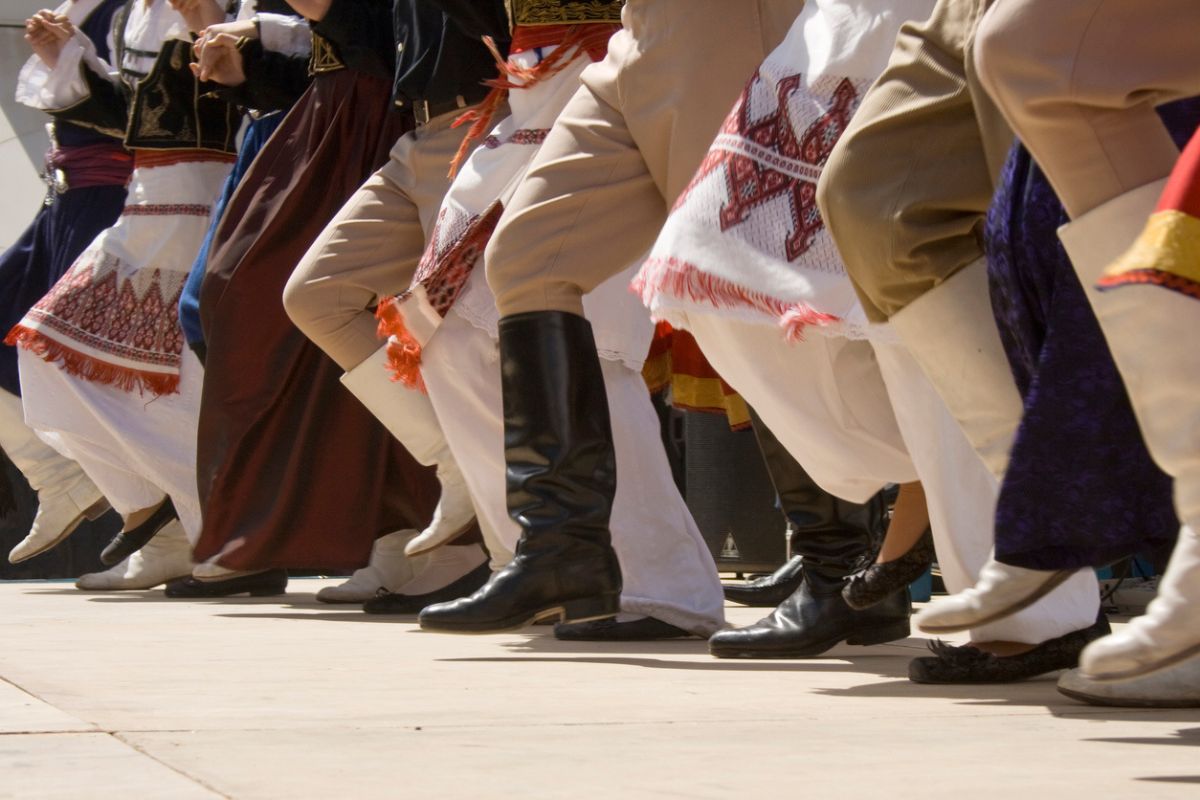
Cretan Culture and Traditions
Cretan culture is a vibrant blend of ancient traditions, warm hospitality, and a zest for life. The Cretan people are known for their strong family values, love of music and dance, and their delicious cuisine. To truly experience Crete, one must immerse themselves in the heart of its cultural traditions.
Attending local festivals, listening to live music, and savoring traditional dishes are just a few ways to connect with the soul of Crete. The warmth and generosity of the Cretan people will undoubtedly make you feel welcome on this enchanting island.
Local Festivals and Events
Cretan festivals are vibrant celebrations of life, tradition, and community. Throughout the year, villages and towns come alive with the sounds of music, the aromas of traditional delicacies, and the energy of locals and visitors alike. Attending a Cretan festival is an immersive experience that reveals the heart of their culture.
One of the most celebrated events is the Wine Festival, held annually in Rethymno. This lively festival offers a chance to sample a variety of Cretan wines, indulge in local delicacies, and enjoy live music and dancing.
Religious festivals are deeply ingrained in Cretan culture, with Easter being the most important celebration. During Easter week, villages come alive with processions, traditional foods, and the lighting of bonfires. Witnessing the passion and devotion of the Cretan people during these celebrations is an unforgettable experience.
The Art of Cretan Music and Dance
Music and dance are integral parts of Cretan culture, expressing their history, passions, and joie de vivre. Whether it’s the soulful melodies of the Cretan Lyra, the rhythmic steps of traditional dances, or the impromptu gatherings for live music, Cretan music has a way of getting under your skin and moving your soul.
The Cretan Lyra, a three-stringed bowed instrument, holds a special place in their musical heritage. Its haunting melodies, often accompanied by the laouto (lute) and the daouli (drum), can be heard at festivals, weddings, and family gatherings.
No Cretan celebration is complete without traditional dances. From the lively Pentozali, danced by a circle of men with impressive acrobatic elements, to the more graceful Syrtos, involving both men and women, these dances reflect the spirit and unity of the Cretan people.
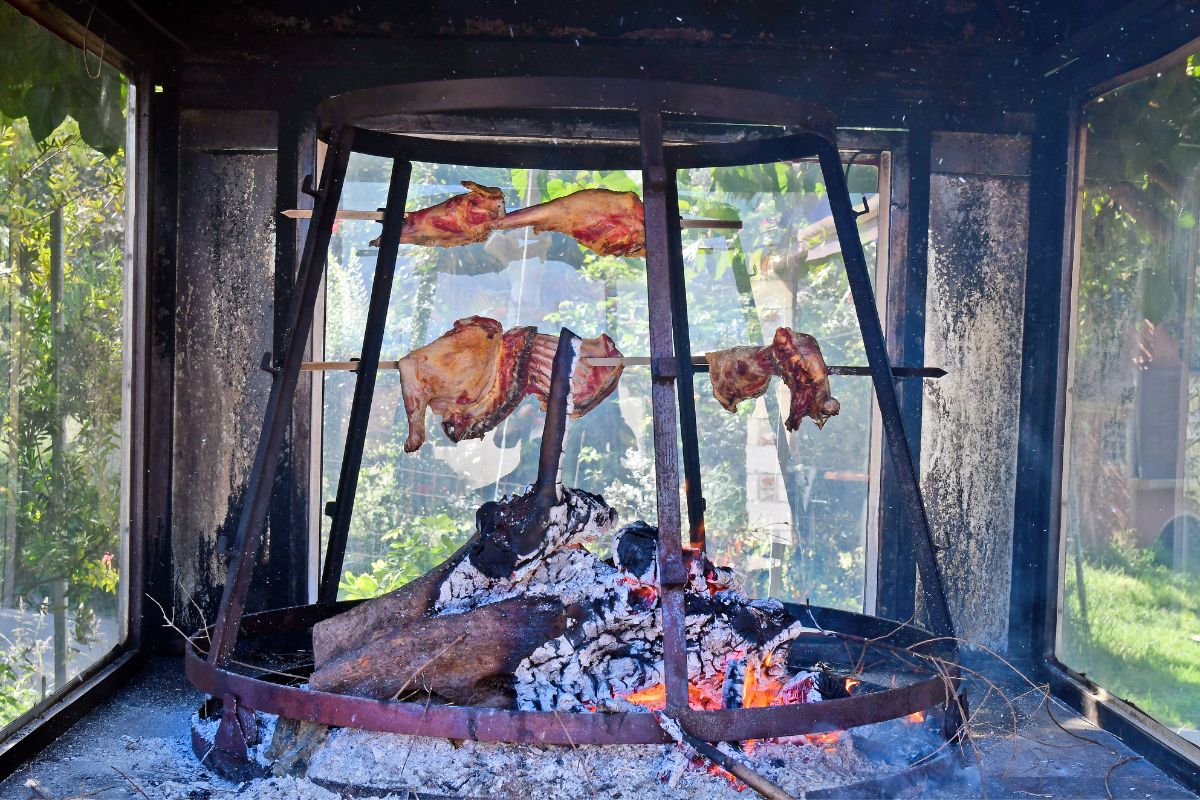
Gastronomy in Crete
Cretan cuisine is a celebration of fresh, flavorful ingredients that are central to the Mediterranean diet. Cretan food is a feast for the senses, featuring succulent lamb dishes, fresh seafood, flavorful cheeses, aromatic herbs, and exquisite olive oil. A visit to Crete offers the opportunity to indulge in traditional dishes like dakos, a refreshing barley rusk salad. You can also savor gamopilafo, a rich wedding pilaf typically made with lamb or goat. These dishes highlight the island’s vibrant culinary traditions. Be sure to wash it all down with raki, a potent local spirit that embodies the Cretan spirit.
Sampling Traditional Cretan Cuisine
Cretan cuisine is a testament to the island’s rich agricultural heritage and its deep-rooted culinary traditions. Based on the principles of the Mediterranean diet, Cretan food is known for its use of fresh, seasonal ingredients, aromatic herbs, and extra virgin olive oil.
Venture beyond the tourist hotspots and seek out traditional tavernas where locals gather. Here, you’ll discover a world of authentic flavors. Start with a selection of mezes, small dishes designed for sharing, such as dakos, taramasalata, and grilled octopus. For a main course, savor the flavors of moussaka, a layered eggplant and minced meat dish, or savor the catch of the day, grilled to perfection and drizzled with lemon and olive oil.
Don’t leave without trying kalitsounia, small cheese or herb pies, or sfakian pies, savory pies filled with mizithra cheese and served with honey. These sweet and savory treats perfectly capture the essence of Cretan gastronomy.
The World of Cretan Wine and Olive Oil
Crete boasts a long and storied tradition of winemaking and olive oil production, dating back thousands of years. The island’s fertile soil and favorable climate create ideal conditions for cultivating olives and grapes, resulting in exceptional products renowned for their quality and flavor.
Cretan olive oil, often referred to as „liquid gold,“ is considered among the finest in the world.
Make sure to sample the local wines like Vidiano, Kotsifali, and Mandilari. Each wine provides a unique taste of Crete’s terroir. This resurgence has brought new life to the island’s wine culture.
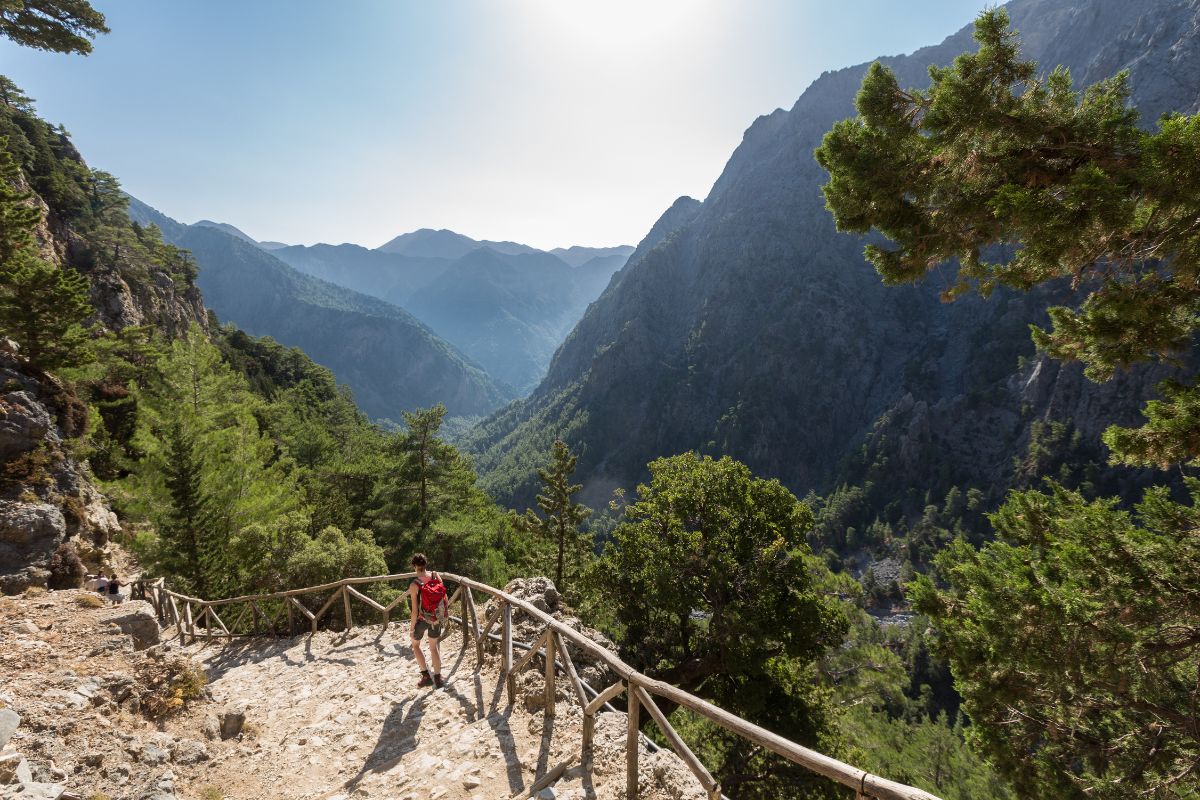
Outdoor Adventures in the Island Crete
Crete isn’t just about beaches and history; it’s an adventurer’s paradise. With its diverse landscapes, ranging from towering mountains and deep gorges to hidden coves and turquoise waters, the island offers a playground for outdoor enthusiasts of all levels.
Hiking Trails for Every Level
Crete is a hiker’s paradise, crisscrossed by a network of well-marked trails that cater to all abilities. From challenging mountain ascents to leisurely coastal walks, there’s a trail for every fitness level and preference.
For experienced hikers seeking breathtaking views, the ascent to Mount Psiloritis, the highest peak in Crete, is a must-do. The trail to the summit rewards hikers with panoramic vistas of the island’s rugged interior and the sparkling Libyan Sea in the distance.
For a more leisurely hike, explore the Samaria Gorge, already mentioned for its natural beauty. The 16km descent through the gorge offers a unique perspective of Crete’s wilderness. Remember to wear appropriate footwear and carry plenty of water, as the gorge can get quite hot during the summer months.
Water Sports and Activities
With its crystal-clear waters and diverse coastline, Crete offers a wealth of water sports and activities for adventure seekers. From windsurfing and kitesurfing to scuba diving and snorkeling, there’s an activity for every level of experience.
Head to the north coast, particularly around the areas of Georgioupolis, Plakias, and Paleochora, for optimal wind conditions ideal for windsurfing and kitesurfing. These areas offer rental shops and lessons for beginners looking to try their hand at these exhilarating sports.
For those eager to explore beneath the surface, Crete boasts numerous diving centers that offer guided dives and PADI courses. The island’s underwater world is as captivating as its terrestrial landscapes, with vibrant reefs, sunken shipwrecks, and an abundance of marine life.
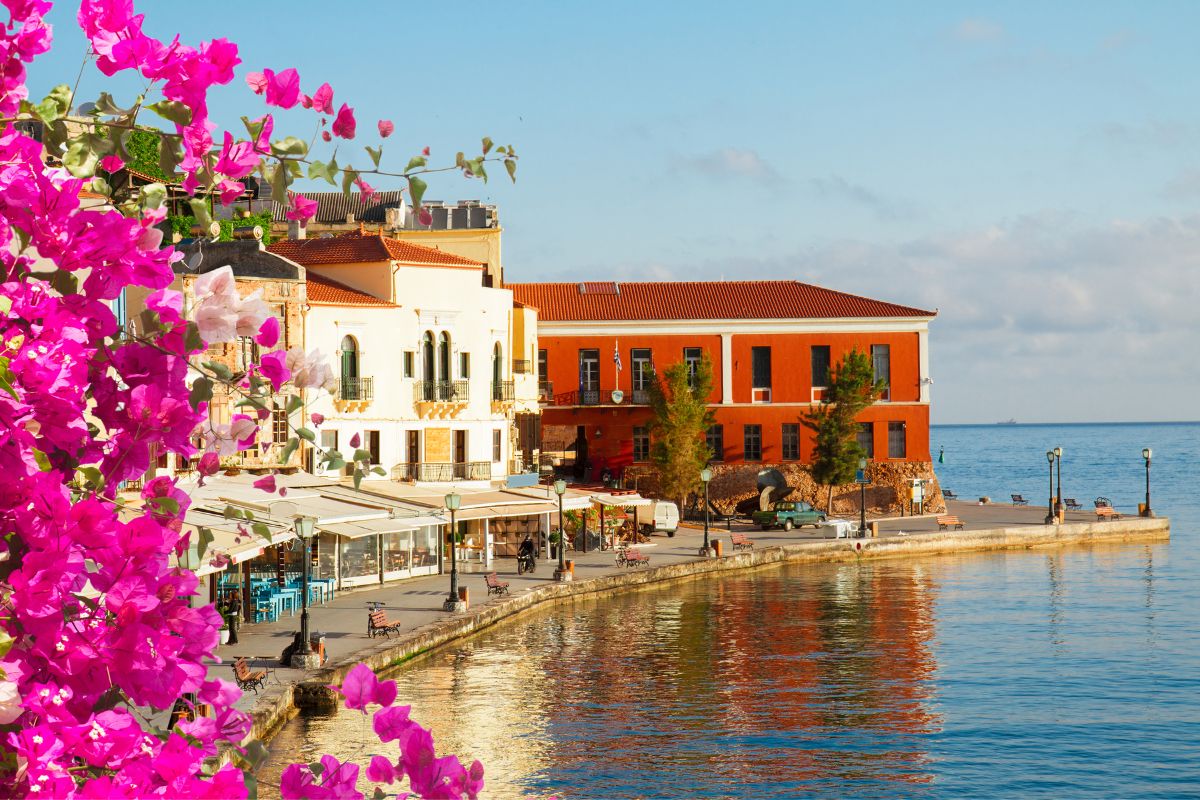
Must-Visit Places in Crete
Choosing which places to visit in Crete can be overwhelming, as the island is brimming with historical sites, charming towns, and breathtaking natural wonders.
To help you plan your trip, we’ve highlighted a few must-visit destinations that showcase the diversity and beauty of Crete. From ancient palaces to Venetian harbors, each location offers a unique perspective of the island’s rich tapestry of history, culture, and natural beauty.
The Palace of Knossos: A Journey to the Past
No trip to Crete would be complete without a visit to the Palace of Knossos, located near Heraklion. This sprawling archaeological site offers a captivating glimpse into the world of the Minoans, Europe’s first advanced civilization.
Chania and Rethymno: A Tale of Two Cities
Chania and Rethymno, both located on the north coast of Crete, are captivating cities steeped in history and charm. These Venetian harbor towns offer a delightful blend of architectural grandeur, bustling waterfront promenades, and traditional tavernas.
Chania, with its iconic lighthouse and picturesque harbor, is a photographer’s dream. Explore the labyrinthine alleys of the old town, lined with boutique shops and traditional craft workshops. Be sure to savor a meal at one of the many waterfront tavernas while enjoying the sunset over the Aegean Sea.
Rethymno, known for its well-preserved Fortezza and charming old town, exudes a relaxed and romantic ambiance. Stroll along the Venetian harbor, lined with colorful fishing boats and waterfront cafes, or lose yourself in the narrow streets adorned with bougainvillea-draped balconies.
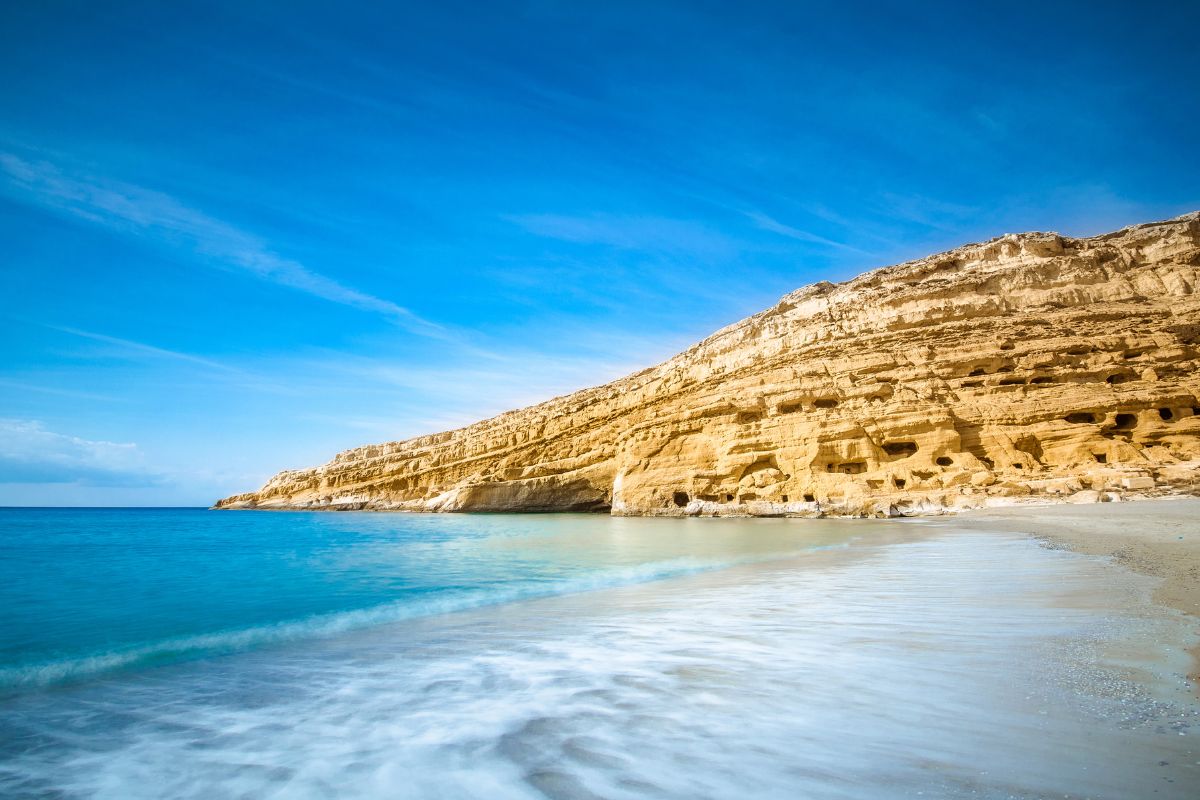
Planning Your Trip to the Island Crete
When planning your trip to the Island Crete, consider visiting during September for optimal weather and fewer crowds. Crete, being the largest island in Greece, offers a diverse range of holiday destinations to explore. For accommodation, choose from a variety of island hotels with amenities like indoor pools, spas, and live music. Ensure to book ferries in advance for seamless travel between the prefectures of Crete. Don’t miss out on experiencing the Mediterranean dishes at great restaurants while enjoying the Mediterranean Sea views. Remember to pack light clothing, as the island enjoys sunshine throughout the year. Make the most of your trip by indulging in relaxation and exploration of the natural beauty that Crete has to offer.
Best Times to Visit
The best times to visit The Island Crete are during the shoulder seasons of spring (April to June) and autumn (September to mid-October). These periods offer pleasant weather, fewer crowds, and lower accommodation prices compared to the peak summer months. Spring brings blooming landscapes and comfortable temperatures ideal for exploring the island’s natural beauty and historical sites. Autumn, on the other hand, provides a mild climate perfect for outdoor activities and relaxation by the Mediterranean Sea. Avoid the peak summer season if you prefer quieter experiences and want to dodge the summer heat. Plan your trip strategically to make the most of your visit to this enchanting Greek island.
Frequently Asked Questions
What’s the best way to get around the Island Crete?
Renting a car provides the most flexibility for exploring the island. Public transport, mainly buses, is efficient and affordable for traveling between major towns and cities. Heraklion Airport serves as the main international gateway to Crete.
Can I visit Crete on a budget?
Yes, Crete offers a range of affordable accommodation options, from hostels to budget-friendly hotels. Dining at local tavernas is an affordable way to savor delicious Cretan cuisine.
What are the must-see historical sites in Crete?
The Palace of Knossos, a remarkable testament to the Minoan civilization, is a must-visit. Explore the Venetian architecture in Chania and Rethymno, and discover the ancient ruins of Gortyn and Phaistos.

